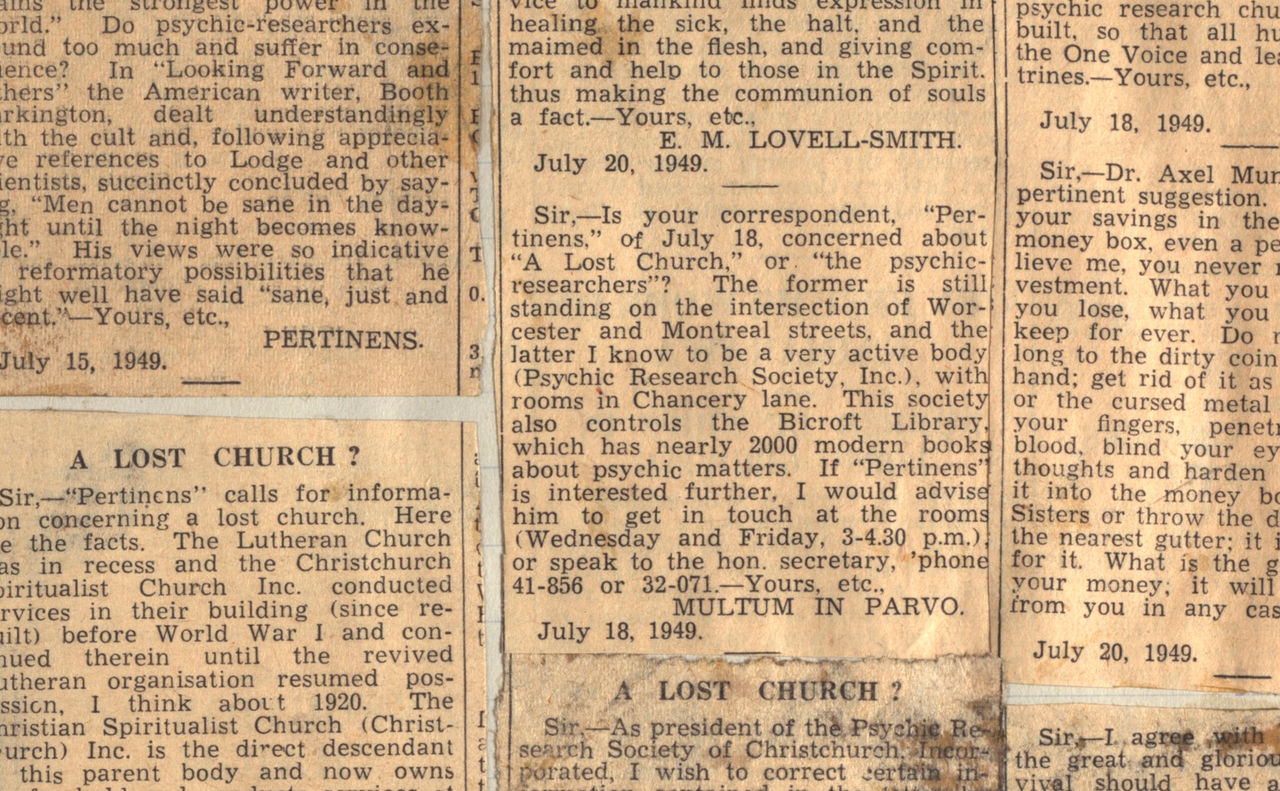The currents beyond the Society itself can be found in the public reception of its work, illustrating these conflicting currents of thought. A Press article about the ‘Parade of Old Contemptibles’ Service in Christchurch Cathedral, relates the sermon of Anglican Archbishop West-Watson, who said that the shift of civilisation away from Christianity ‘has met with a rise in dictatorships and perverse worldly states’. A subsequent letter from a certain ‘ELMS’ agreed with the majority of the sermon, but claims that it is not a turning away from Christ, but the corruption of ‘Master Jesus’ by Pauline theology. The original, pure Christianity was in agreement with ‘Psychic science’, and a favourable report was recently made by Anglican authorities, who subsequently declined to let it be published. These workings showed cracks of acceptance in the orthodox establishment, but unease about their public reception.
This acceptance quickly drew detractors. A letter from ‘PERTINENS’, on July 30, 1949, ridicules spiritualism as ‘fluffy-mindedness’ which blended Old Testament miracles with scientific pretence. More scientific methods were needed than recourse to mediums. Pertinens then suggested that the ‘psychic cult’ had gone underground, because their previous church building had been demolished many years before. Here we have the voice of an articulate scepticism, suggesting a much wider public opinion.
Coming to the rescue of the Spiritualist cause, ‘O. G. Moody’ answered that the Church used by Spiritualists was previously Lutheran, in decline and given to them, before the First World War, but returned to Lutheran use after around 1920. Spiritualist services could currently be found at 272 Madras St. In the previous year, 1948, there was a service attended by nine hundred at the Civic Theatre. Pertinens was still not convinced, claiming that ‘meetings in mean rooms’ suggested a decline. Against this hostility, ‘R.C. Munro’ insisted that Psychic Research ‘was non spiritualist affiliated, and is non-sectarian’. it was part of an international federation. Contradictions have begun to accumulate, added to by ‘J.S. Mander’ who argued that the purpose was a merger of spiritualist societies, according to the former Lutheran Minister. All ‘E.L.M.S.’ could say, known to be Edgar Lovell-Smith, was that ‘stones and mortar’ were less important than the ongoing work of healing.

